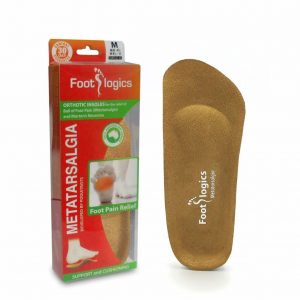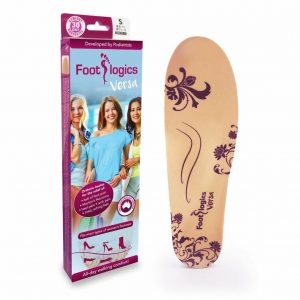Morton’s Neuroma
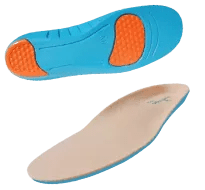
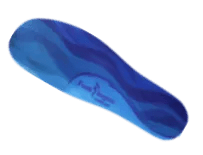
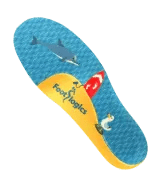
Recommended orthotic insoles for Morton’s Neuroma
Morton's Neuroma
Morton’s Neuroma occurs when the nerve between the 3rd and 4th metatarsal bones is squeezed. This region is particularly vulnerable to nerve impingement because it is where the lateral and medial plantar nerves join and typically the nerve is slightly thicker at this junction. This condition is similar to Metatarsalgia but includes a lack of sensation and tingling in the toes. This condition can be very painful at times.
Neuromas are defined as benign nerve tumours. Morton’s Neuroma is not a tumour. It is a swelling and thickening of tissue that surrounds the digital nerve. The digital nerve works to receive messages and relay actions to the toes.
Signs and Symptoms
- Lack of feeling in the toes
a tingling feeling in the toes and feet - Extremely severe pain that radiates from the ball of your foot all the way down to your toes
- The discomfort is made worse by movement.
- You could not even feel any pain in the morning, but as the day goes on and you participate in activities, you might start to experience some discomfort.
What exactly causes Morton's Neuroma?
The exact cause of this condition is not fully understood. It usually affects women over 50 and the condition is aggravated by tight-fitting footwear. Faulty foot mechanics (i.e. over-pronation) may be a contributing factor. The condition seems to occur in response to irritation, pressure or injury to one of the nerves that lead to the toes. The neuroma is part of your body’s response to the irritation or injury. Often dropping of the metatarsal bones (as a result of over-pronation) contributes to the problem.
How can you treat this condition?
First of all a change in footwear is required. One must refrain from wearing any tight fitting shoes and wear a soft broad type of shoe with plenty of room in the toe box.
Rest, ice, anti-inflammatory medication can help ease the pain. Cortisone injections may resolve the pain in some people. If the neuroma is small in size a course of 5-6 injections of local anaesthetic around the neuroma can also be helpful.
Surgery
A Morton’s Neuroma operation involves removing the enlarged nerve by a cut made at the top of the foot. The deep transverse metatarsal ligament which causes the constriction above the nerve is released. The thickened nerve is then isolated from the surrounding tissue and cut where the nerve trunk appears normal again.
How orthotics can help
Footlogics Versa orthotics can help reduce the symptoms of Morton’s Neuroma that occur while wearing women’s fashion shoes. Orthotic insoles lift and support the forefoot to prevent the metatarsals from falling. This support helps prevent squeezing on the nerve, which relieves both tingling and pain arising from Morton’s Neuroma.
Morton’s Neuroma can also occur while wearing ordinary, flat shoes. Footlogics Metatarsalgia ¾ of full-length orthotics provide metatarsal support and lifts the bone formation to avoid undue tension and chafing on the metatarsals. The support prevents abrasion and force on surrounding ligaments and nerves. When suffering from Morton’s Neuroma, it is recommended you seek the advice of a podiatrist. In some instances, surgery is required.
Inserts for Morton’s Neuroma
Many different types of inserts designed specifically to alleviate the pain of Morton’s Neuroma are available from Footlogics. These unobtrusive and straightforward items provide excellent and long-lasting relief from the pain and discomfort associated with Morton’s Neuroma, and they can be used with any pair of closed-toe shoes.
When used in shoes that don’t fit properly, these inserts can prevent knee and back pain, among other ailments and health issues.
Morton’s Neuroma Insoles
Footlogics is the name to remember if you want to find a high-quality range of insoles for Morton’s neuroma that were made by professionals.
We have a variety of products so that customers can choose the insoles that will help them feel better and noticeably less pain. Users of our insoles will be able to stop being limited by foot pain and get back to doing what they love. Get in touch with Footlogics today to find out more.
Morton's Neuroma and Metatarsalgia explained
Morton’s neuroma is when the interdigital nerve of the toe gets squished, which makes the toes hurt and feel numb. Nerves in the ball of the foot, especially between the third and fourth toes, are often affected. As part of nonsurgical treatment, exercise and rocker-soled shoes are used to keep the foot stable. Despite the fact that steroid shots may help temporarily or permanently, they come with some risks. A common surgery is to decompress or cut out the nerve that is hurt. At this point, there isn’t strong evidence to say that one method is better than another.
Near the bottom of the foot, nerves run between the metatarsal heads. Nerves run between the metatarsal heads and go under the muscles. The middle and lateral toes are sensed by these nerves. An interdigital neuroma is nerve damage in the ball of the foot. A lot of people feel pain between their metatarsal heads. There are times when more than one nerve is hurt. If more than one neuroma is found, look into other explanations. An interdigital neuroma is most often found between the third and fourth toes. Squeezing the metatarsal heads makes the interdigital neuroma pain worse and causes popping. It’s common for the web between the toes to feel numb or hot.
Metatarsalgia has signs that are similar to those of Morton’s neuroma. These problems are connected. Another option is a stress fracture in the metatarsal bone.
X-rays are often needed to rule out other problems. Nerves are not shown on x-rays. MRI and ultrasound can show nerves, but it’s not clear if problems like bigger size or local swelling are signs of Morton’s Neuroma or not.
Injections are used to treat interdigital neuroma. Steroid shots can make you feel a lot better for a short time. The change might not be what was hoped for in the long run. 20–70% growth at first. A lot of people have problems like pain, bruises, and losing foot fat.
Sometimes, ethanol or phenol sclerosing shots are used around the nerves between the fingers. This method really works. As a result of their harsh and unpleasant properties, the orthopedic community has been slow to accept them. Usually, 3 to 5 shots are given. It has been said that nerve pain, soft tissue damage, and local pain have happened.
Surgery for Morton’s Neuroma is easy. Most of the time, the interdigital nerve is found by making a cut in the arch muscle that doesn’t support weight on the top or bottom of the foot. Surgery doesn’t always help with pain (10–20% of the time). This could be because identification isn’t always clear. Some people get nerve cuts that hurt a lot and are hard to treat.

